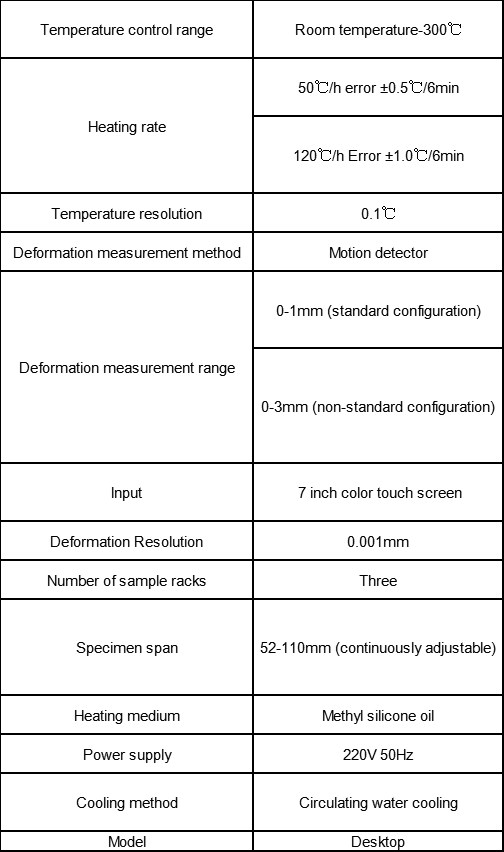Thermal Deformation Vicat Softening Point Tester
Product Description
Features of Thermal Deformation Vicat Softening Point Tester
Meet the standard:
GB/T 1633, GB/T 1634, GB/T 8802, ISO 2507, ISO 75, ISO 306, ASTMD 1525, ASTMD 648
Features of the instrument:
1. Sample holder:
The sample holder is integrally processed and formed, with a non-assembled structure. The load rod, indenter and needle are all made of iron-nickel alloy. The thermal expansion coefficient below 300 °C is zero, and the experimental data is true and accurate. (emphasis, directly affects the test results)
The sample support span is continuously adjustable from 52 to 110, which can be used as standard samples or non-standard samples.
2. Heating medium box:
The heating medium box is made of 304 stainless steel, which has excellent corrosion resistance and anti-aging performance. The interlayer is filled with 20mm thick high temperature resistant asbestos for heat preservation, which can greatly reduce the heat loss during the heating process.
The cooling pipe is made of copper pipe with a diameter of 10mm, which has strong thermal conductivity. With water cooling, it can quickly conduct the heat in the fuel tank to achieve the effect of rapid cooling.
3. Electrical control system:
The electrical equipment of this machine adopts Taiwan Delta PLC modular independent electronic control system. Different product components canbe used interchangeably, with stable performance, high precision and extremely low failure rate.
It adopts 7-inch Delta true color touch screen input, with good man-machine interface and sensitive touch. It is easy to operate and easy to use for testers who are new to this type of instrument.
4. Safety protection:
The mechanical temperature upper limit protection switch and the automatic stop after the test is completed to ensure the safe and stable operation of the test.
5. High-precision measurement and control system:
High-performance temperature sensor and high-precision displacement sensor are used to accurately measure the small changes of the sample, and advanced PID algorithm and all-optical isolation phase modulation module are used to control the temperature rise, which ensures that the temperature rise rate error is less than 0.5ºC.




